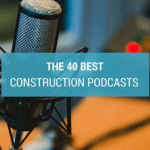“Green” building is almost mainstream now, with the vast majority of companies offering products and services designed to make buildings more environmentally friendly. Commercial owners and tenants, along with residential home buyers, are now starting to demand healthier buildings. But what does this mean for manufacturers of building materials?
The Health Impacts of Building Materials
Everyone knows that asbestos is bad, and it was one of the first products that made professionals and the general public start thinking about the health effects of building materials. People also started focusing their attention on conventional oil-based paints. The smell of freshly applied paint comes from volatile compounds that are now viewed as health risks. Buyer demand has led to the development and popularity of low VOC and no VOC paints as healthier alternatives.
Likewise, worries about the dangers of exposure to formaldehyde, even in very small amounts, changed the way fiberglass insulation and other products are manufactured.
Manufacturers of paneling, cabinets, flooring, adhesives, roofing and other building materials now face similar demands. This demand creates a real opportunity for the companies that can prove their products are free of carcinogens and other hazardous or unhealthy ingredients. Pursuing the growing opportunities in healthy buildings is promising but takes effort, especially if you can’t verify what your raw material sources have in their products.
Creating Markets for Healthy Materials
Trends in new products and services often seem to come out of nowhere, but they can usually be traced back to a few early adopters and innovators who drive the change. The demand for healthier building materials is no exception to that phenomenon. Because we spend about 90% of our time indoors, much of it at work, innovative companies like Google are starting to differentiate themselves by providing healthier work spaces. They insist on materials that do not cause or contribute to respiratory problems and do not introduce cancer risks, and in doing so, they boost awareness of these products.
Google uses a healthy building database called Portico to help their architects and staff select green and healthy construction materials for the company’s building projects. As one of the world’s largest corporations, Google has a substantial amount of influence over architects, contractors, developers, and manufacturers.
As of early 2017, the database contains over 2,600 products and information supplied by over 5,000 companies. The materials that “make the cut” at Google and other progressive firms meet high standards for safety on several criteria.
Transparency Is Key
Google’s Portico rates potential building materials on a 16-point scale. One key element of the scale is transparency: how much does the manufacturer reveal about the product’s chemical makeup? The more the company can reveal about its product and the parts that went in it, the better the score.
Google soon discovered that it wasn’t alone in its concerns about transparency. They teamed up with three other organizations that shared the same value: the Healthy Building Network, a nonprofit that promotes non-toxic building materials, Flux, a developer of collaboration tools for architects and engineers, and thinkstep, a sustainability software firm. Together, these four organizations developed the Quartz Project, an open data initiative that promotes transparency in building products. Quartz collects data on the environmental and health impacts of building materials and publishes it in an easy to understand and simple to access format. By using the database, anyone can easily compare materials based on relevant measures.
Transparency is crucial to many large buyers. But transparency is hard to achieve. You know what went into your own product, of course, but what about the components you received from suppliers? Are they free of carcinogenic compounds or other potential hazards?
Google’s suppliers had trouble finding out what their own suppliers were using. And it’s understandable because it takes time and money to answer questions and sometimes it simply isn’t worth the effort. However, a building materials firm can use the lure of a big opportunity to get their suppliers to report what chemicals they use. In fact, that’s what some of Google’s main suppliers did. By dangling the possibility of landing Google as a customer in front of their suppliers, they got them to produce all the relevant information. We’re likely to see a lot more of this happening. As environmental awareness and health consciousness continue to rise, so will the importance of supply chain transparency.
Healthy Buildings and Safe Materials
Huge companies like Google aren’t the only buyers who care about healthier building materials. Real estate developers also want to offer “green” and healthy homes and buildings. Companies that can prove their building materials are “clean” stand to be in a stronger competitive position. With Portico making it easier to find healthy or “green” materials, Google’s demanding standards are marking the beginning of a surge in demand.
Homes built to our standards have been scientifically proven to make occupants feel better, be more productive, wake up more rested, experience less sickness, reduce allergic reactions, reduce the susceptibility of becoming allergic to something new and greatly reduce the risk of chronic respiratory illness.
With benefits like that, it’s clear that building materials companies who want to keep pace with the needs of their customers need to get on the healthy bandwagon.
A good first step is to make a commitment to healthy building materials and issue a clear statement of your position (be sure to also post it on your website and not just circulate it internally). It will show your customers where you stand and help everyone in your company understand your approach.
I wonder how long until we are attending the Healthy Building trade show? Just what we need—another trade show! 🙂
Even though I am attempting to be funny, let’s be clear: healthy building is a serious new opportunity. Today, it is an opportunity for you to differentiate yourself. Soon, you will have to be healthy, so you might as well get started now and be ahead of your competition.
Competing on Health and Quality
I hear a lot of building manufacturers worry about Chinese building products flooding the market. Many companies are losing sales to these products because they cost less than even the most affordable American products. But they cost less for a reason: these products don’t have a reputation for either quality or using healthy materials. And that’s precisely where American manufacturers can gain or retain an edge: if you can’t undercut their price, then you can outshine them when it comes to healthy, quality materials.
Many companies also believe that customers won’t pay more for “green” or healthier products. But this is changing. Innovative companies like Google will pay more and so will well-informed smaller buyers. Once every company’s products reach the same level of healthiness or sustainability, then price will become more important. Until then, it’s a great way to differentiate.
If you’re worried about your customers being ready, remember one important thing: in the early stages of change (like the growing interest in healthy buildings), the building product companies who adapt first have a great advantage.
One final recommendation. If your current customers aren’t interested in healthy products, you need to find the customers who are. You can also wait and risk losing your current customers to a healthier competitor when your customers eventually have to embrace healthy!
Subscribe To My Newsletter
If you like what I say, sign up for my newsletter here and get my weekly newsletter every Sunday night.









